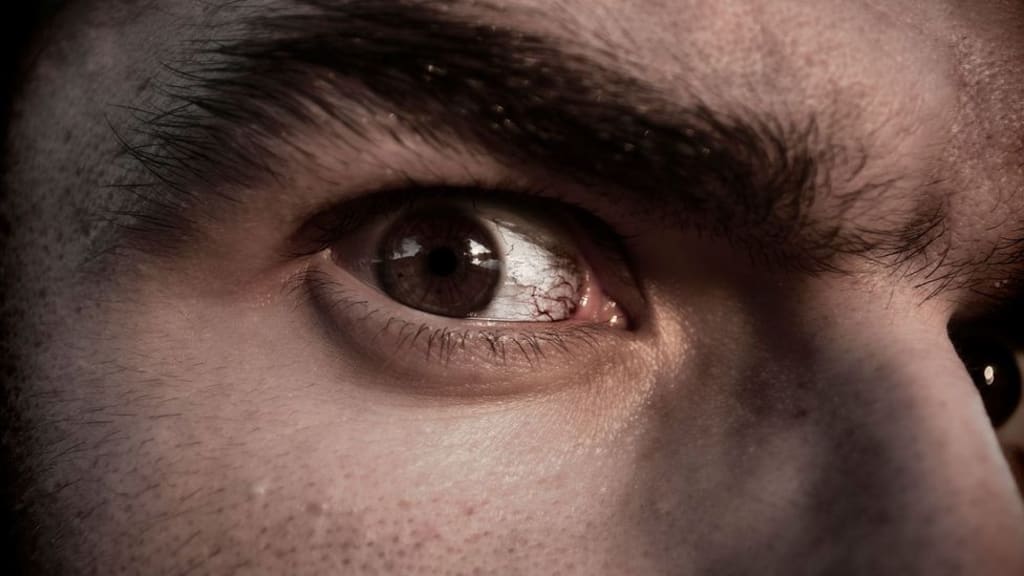The Unbelievable Stories of Survival and Luck
264H Without Sleep

Introduction:
In the realm of extraordinary tales, stories of survival against all odds and strokes of incredible luck stand out. From a young man who defied the limits of sleep deprivation to a woman who emerged unscathed from a frozen ordeal, these accounts challenge our understanding of human resilience and fate.
Sleep Deprivation Experiment of 1964:
In January of 1964, a remarkable experiment unfolded, pushing the boundaries of human endurance and revealing profound insights into the functioning of the human brain. Randy Gardner, a seventeen-year-old high school student, embarked on a mission to stay awake for more than 11 days. As Randy and his friends documented his journey, they noticed a gradual decline in cognitive abilities and sensory perceptions. Surprisingly, despite this extended sleep deprivation, Randy managed to perform exceptionally well in certain activities, such as basketball. This groundbreaking experiment, which made its way into the Guinness Book of Records, illuminated the intricacies of the brain's ability to take restorative breaks within different sections.
The Disappearance of Martha Wright:
The chilling case of Martha Wright's disappearance in 1975 remains a puzzle that defies conventional explanation. While driving through a tunnel, her husband, Jackson, witnessed her vanishing right before his eyes. Despite extensive investigations and speculations, no concrete leads emerged. Theories of underground dwellers like mole people, often subjects of urban legends, were debunked. The story highlights the inexplicable nature of certain mysteries that remain beyond rational understanding.
Bill Morgan's Twice in a Lifetime Lottery Wins:
Bill Morgan's story could easily be dismissed as an improbable work of fiction, were it not for its undeniable reality. In Australia, 1998, after surviving a heart attack and a coma, Bill bought a lottery ticket and won a car. A year later, a television crew captured him buying another ticket, which incredibly led to a second lottery win of $250,000. Bill's extraordinary luck, against staggering odds, showcases the uncanny twists of fate that can occur in real life.
Gene Hilliard's Frozen Survival:
In the winter of 1980, Gene Hilliard's battle for survival unfolded in the frigid night. After crashing her car into a ditch, she wandered in freezing conditions, eventually collapsing near a rancher's house. Her body became so cold and stiff that it resembled a statue, with no signs of life except her slow, shallow breathing. Rushed to the hospital, Gene defied the odds and made a miraculous recovery, her body withstanding the potential damage of frostbite. Her story demonstrates the incredible adaptability of the human body to extreme conditions.
Conclusion:
These stories of defiance, luck, and resilience remind us that reality can often be more astonishing than fiction. From challenging the limits of sleep deprivation to surviving freezing conditions, these accounts underscore the remarkable capabilities of the human body and the unpredictable twists that life can take.
The Effects of Sleep Deprivation:
Sleep deprivation has significant impacts on human cognitive and physical abilities. Just one day without sleep can reduce reaction speed, weaken analytical skills, and lead to increased stress. By the third day without sleep, irritability sets in and cognitive abilities start to decline. If a person goes a whole week without sleep, serious problems can arise throughout the body. Perception blurs, and distinguishing reality from imagination becomes challenging.
However, an extraordinary event took place in January of 1964. A young man managed to stay awake for over 11 days, and remarkably, he felt quite normal at the end of this period. This achievement made its way into the Guinness Book of Records and offered valuable insights into the human brain's functioning.
The Record-Breaking Experiment:
In December 1963, two high school students, Randy Gardner and his friend, embarked on a unique science project. They aimed to explore the effects of sleep deprivation on cognitive abilities and basketball skills. The initial plan was to stay awake for as long as possible, surpassing the previous record of 260 hours set by a DJ.
Randy's friend meticulously recorded the changes in Randy's body over the course of the experiment. The first two days were relatively smooth, with Randy feeling excitement and engaging in various activities. However, by the third day, his friend even unintentionally dozed off while documenting Randy's condition.
Recognizing the need for help, the duo reached out to a third friend and publicized their experiment in a local newspaper. This caught the attention of sleep researcher William DeMott from Stanford University. Four people were now involved in the experiment, assessing Randy's sensory abilities, cognitive functions, and physical performance.
As the days passed, Randy's cognitive and sensory abilities declined, and he experienced bouts of nausea. Yet, he managed to engage in basketball and other activities, even outperforming his friends in some instances. His celebrity status garnered attention from various scientists who conducted tests on his intellectual abilities and brain activity.
The Sleepless Milestone:
Approaching the end of the experiment, Randy was on the brink of breaking the previous record. He surpassed 264 hours without sleep, setting a remarkable milestone. However, scientists decided to monitor his brain activity during his first sleep after the experiment concluded. Randy slept for about 15 hours, and upon waking up, he displayed no major negative consequences.
Research into Randy's brain activity during his sleepless period revealed a unique phenomenon. Different parts of his brain seemed to alternate between periods of rest, allowing him to function remarkably well in various tasks.
The Unexplained Disappearance:
Switching gears, in 1975, a bizarre and perplexing incident occurred involving the disappearance of Martha Wright. She vanished into thin air under inexplicable circumstances. While driving with her husband, Jackson Wright, through the Lincoln Tunnel, Martha suddenly disappeared from the car, leaving Jackson bewildered and desperate for answers. Despite extensive investigations, no leads, clues, or theories emerged to explain her mysterious disappearance.
This event stands as an unsolved puzzle, defying logical explanations and adding to the realm of unexplained mysteries. While many cases can eventually be unraveled through critical thinking and dedication, Martha Wright's disappearance remains an enigma that continues to baffle those who hear the story.
A Frozen Survival Story:
Jumping to 1980, another astonishing tale emerges. Gene Hilliard, a young woman, faced a life-threatening situation in freezing temperatures. After losing control of her car and getting stranded in the cold, she attempted to find help. Subsequently, she became immobilized due to extreme cold, resembling a frozen statue.
Miraculously, she was discovered by a rancher who rushed her to the hospital, where her stiff body started to regain life as it thawed. Gene's body had entered a survival mode that redirected blood flow to vital organs and slowed down her metabolism, ultimately allowing her to survive the ordeal.
This series of extraordinary stories illustrates the incredible resilience and mysteries that the human body and mind can sometimes manifest, leaving us with wonder and awe.






Comments
There are no comments for this story
Be the first to respond and start the conversation.